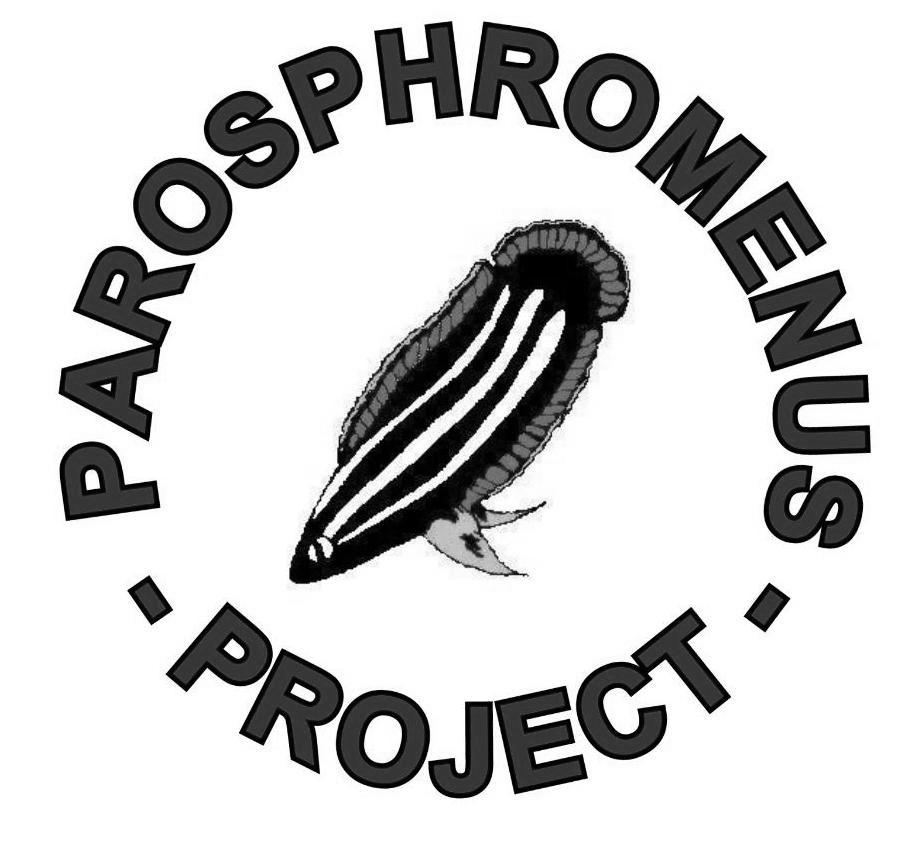Spring Census 2016 Parosphromenus-Project

Commentation of synopsis and godfathers
Kommentar der Synopse und Paten
commentation du synopsis et des parrains
Commentation of synopsis and godfathers (german by Benjamin Wilden)
We thank everybody who took part in the census!
General
44 persons took part in the spring census 2016. This is again fewer than in the last Census.
We are aware that we see a downtrend in the participation to the Census.
7 of the 44 reports are „no fish“. That is fewer than last time.
At this place I would like to thank everybody to have reported many trader names and import information. So we are able, as in the last years, to discuss about the existence of all species, but based on the fact that for example P.deissneri or P. gunavani has been reported each just by one person, with the commercial designation.
Whether we now can say that we have all species in our stock and whether thit is important for the individual, may everybody decide for him/herself.
Furtheron some very popular species as P. linkei, P. quindecim or P. nagi are very frequent and very constant in stock. Also P. phoenicurus did not break down in stock as often happens after imports, but shows, that also such fish can be held for a longer time. We hope that this will continue thit way and will be a positive example. On the other side some species, for example P.opallios or P. paludicola, which benefited from the Hamburg meeting, had been less reported now.
Specific
P. alfredi stays constant, compared to the last census. Two new location names have been reported.
P. allani also is constant, which is a clear improvement as compared with the last years.
P. anjunganensis seems to have leveled off to a low level. Still we will have to keep this in mind after the negative trend in the last years.
P. bintan seems to be furtheron one of the most frequent spezies. But the number of the keepers has been reduced to half. Trade fish have been reported fewer, and location forms have been reported just by one member.
P. deissneri has been reported just by one member.
P. filamenosus has stayed relatively constant, in relation to members and numbers. But the form „Ampah“ exist just at one member.
P. gunawani has also been reported only by one member as trade fish.
P. harveyi is constant and can be considered as safe.
P. linkei furtheron is very safe. There have been reported more fish and offspring. Also there had been reported another location form.
P. nagyi can be regarded as save and stayed constant.
P. opallios was in autumn as good as long time before never had been, but now has reduced again to two holders. Surely one of the losers of this census.
P. ornaticauda has been reported only by half as many members as in autumn. We hope that keepers who didn’t take part in the census could keep their stock constant. The species is still precarious.
P. pahuensis is not frequent. But since last census quite constant.
P. paludicola only has been reported by one member!
P. parvulus had been reported by fewer members than before. Many offspring give hope.
P. phoenicurus had been minimal fewer reported than before, we hope the high number of keepers can be kept constant.
P. quindecim is most frequent in absolute number, but the number of members are a bit fewer, but we can regard it as safe.
P. rubrimontis could maintain the upward trend.
P. sumatranus is furtheron in danger. Few keepers and no offspring.
P. tweediei had been reported minimal fewer than in autumn, but has not to be considered as endangered. Also a new location form has been added.
Furtheron the form „Parenggean“ has been still reported just by one member.

